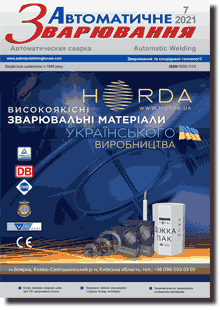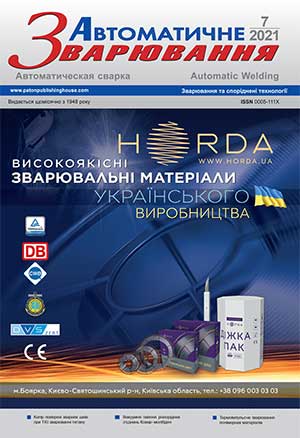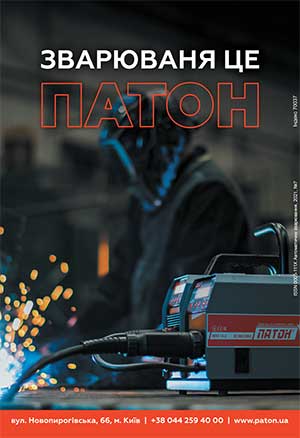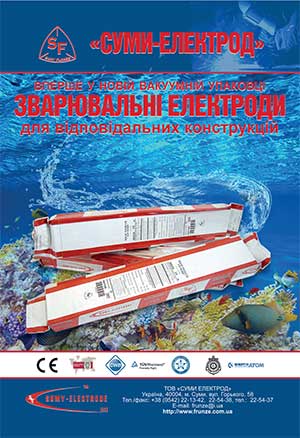| 2021 №07 (01) |
DOI of Article 10.37434/as2021.07.02 |
2021 №07 (03) |

"Avtomatychne Zvaryuvannya" (Automatic Welding), #7, 2021, pp. 9-14
Influence of oxygen concentration in argon on the properties and colour of weld surface in tig welding of titanium
V.P. Prilutskiy, I.K. Petrichenko
E.O. Paton Electric Welding Institute. 11 Kazymyr Malevych Str., 03150 Kyiv, Ukraine. E-mail: office@paton.kiev.ua
The paper presents the results of investigations of the process of formation of a gas-saturated layer on the weld surface at accidental violation of the conditions of argon protection (under the nozzle) in TIG welding of VT1-0 titanium. It was found that the change of oxygen content in argon of the protective nozzle in the range from 0.024 to 1.18 vol. % leads to a change of the colour of a region of forming weld surface. It is shown that each colour corresponds to a certain depth of the gas-saturated layer that can be up to 0.25 mm. A correlation dependence of weld surface colour – gas-saturated layer thickness – oxygen content in the protective nozzle was established. Results of gas analysis and mechanical testing of the welds show that oxygen and nitrogen from the air practically do not interact with the molten metal of the weld pool in the argon of the protective nozzle during welding. Therefore, the quantitative characteristics of the metal of welds are on the level of those of the metal of welds produced under standard conditions. To increase the operational reliability of welded assemblies with a coloured surface of a weld region, it is proposed to remove it, depending on its colour to the depth in the range from 0.10 up to 0.25 mm. 9 Ref., 2 Tabl., 6 Fig.
Keywords: argon-arc welding (TIG), VT1-0 titanium alloy, weld surface colour, violation of argon protection, weld metal properties.
Received: 05.05.2021
References
1. Gurevich, S.M., Zamkov, V.N., Blashchuk, V.E. et al. (1986) Metallurgy and technology of welding of titanium and its alloys. 2nd Ed. Kiev, Naukova Dumka in Russian].2. Richardson, L.S., Grant, H.I. (1954) Reaction of oxygen and nitrogen with titanium from 700° to 1050°. J. Metals, 1, 69-70. https://doi.org/10.1007/BF03397982
3. Baj, A.S., Lajner, D.I., Slesareva, E.N., Tsypin, M.I. (1978) Oxidation of titanium and its alloys. Moscow, Metallurgiya [in Russian].
4. Mitra, T.K., Venkataraman, G. (1996). Effect of shielding on the properties titanium welds. WRI J., 17(4), 117-121.
5. Mc Cue Don, Irving, B. (1999) Gas tungsten arc welding: It`s built handle titanium. Welding J., 11, 31-36.
6. Dennis D. Harwig. (1999) Achieving high-quality titanium arc welds. Practical Welding Today (EWI Update), 1/2, 48-50.
7. Prylutsky, V.P., Yeroshenko, L.E. (2021) Influence of conditions of welding pool protection by argon on properties of TIG of titanium. The Paton Welding J., 6, 39-43 https://doi.org/10.37434/as2021.06.06
8. GOST R ISO 15614-5-2009: Specification and qualification of welding procedures for metallic materials. Welding procedure test. Pt 5: Arc welding of titanium, zirconium and their alloys (Reedition) [in Russian].
9. Grabin, V.F. (1975) Fundamentals of physical metallurgy and heat treatment of welded joints from titanium alloys. Kiev, Naukova Dumka [in Russian].




